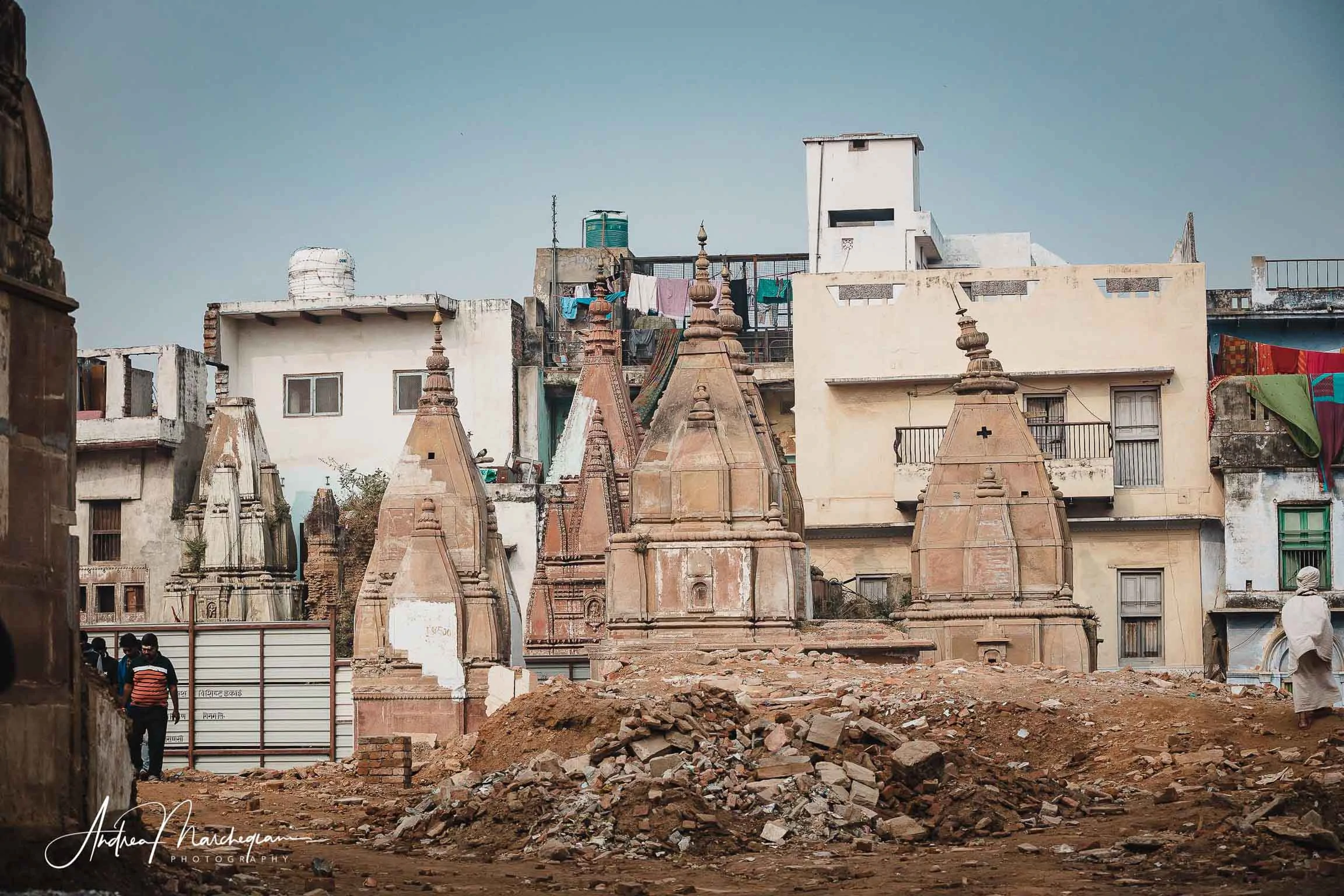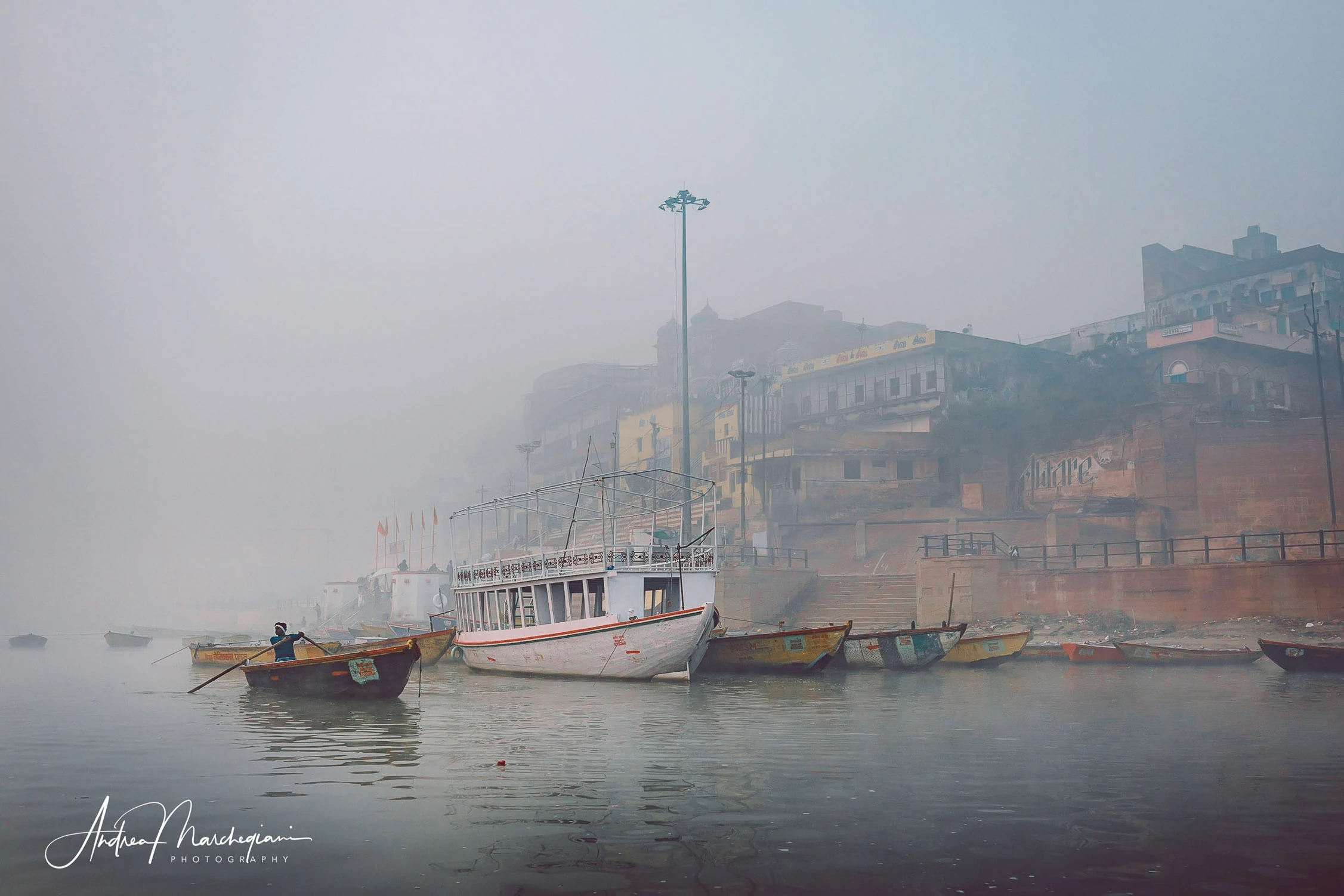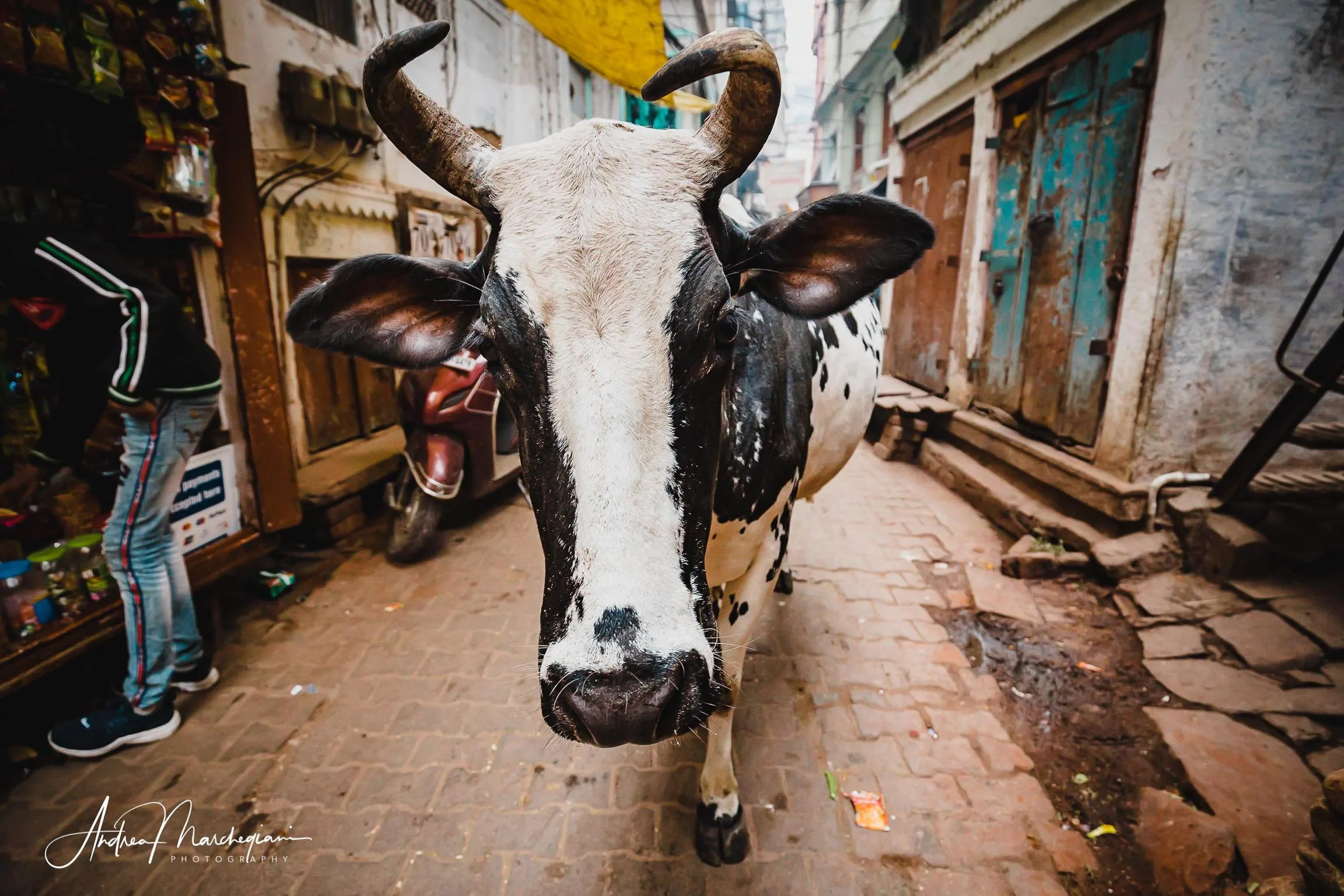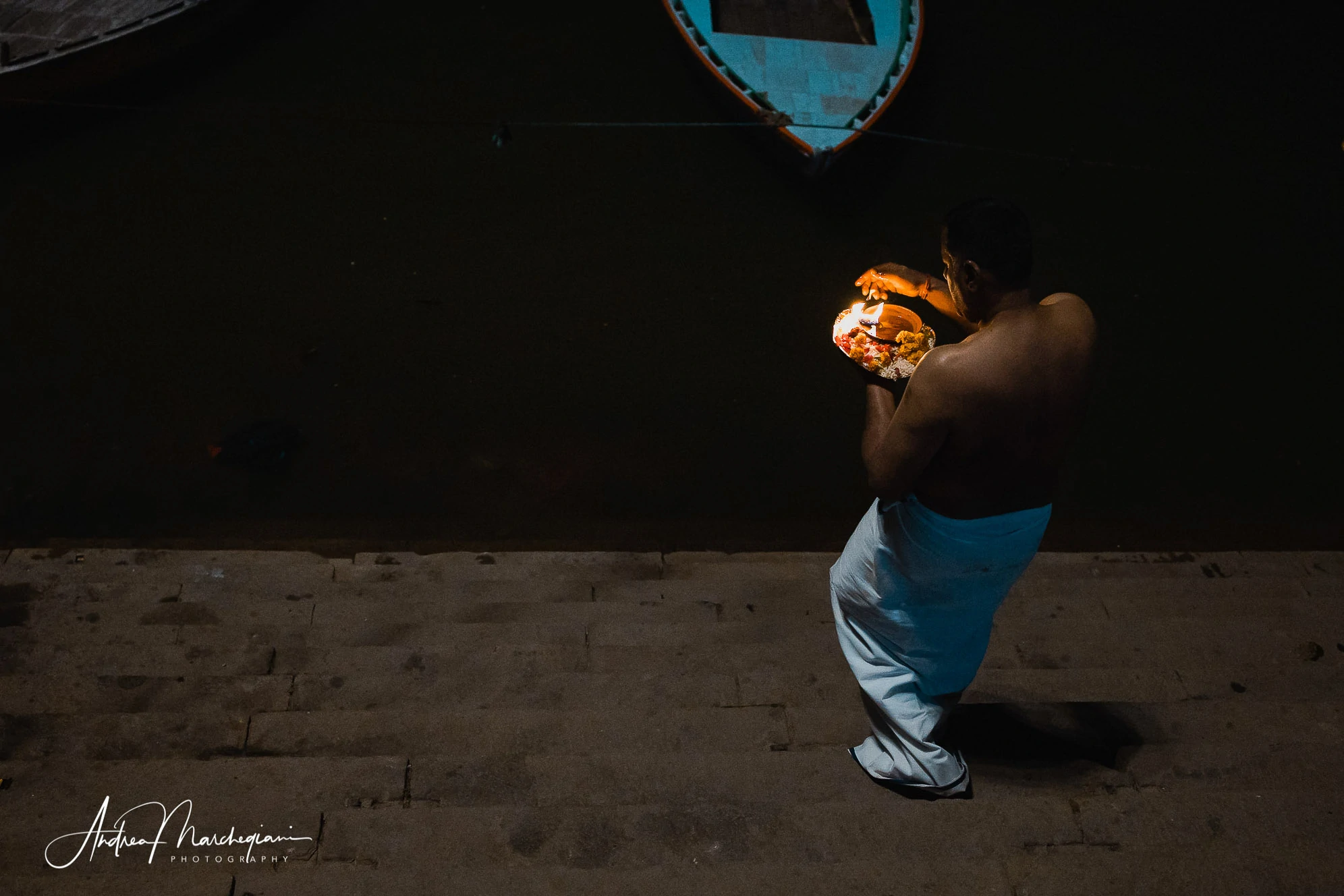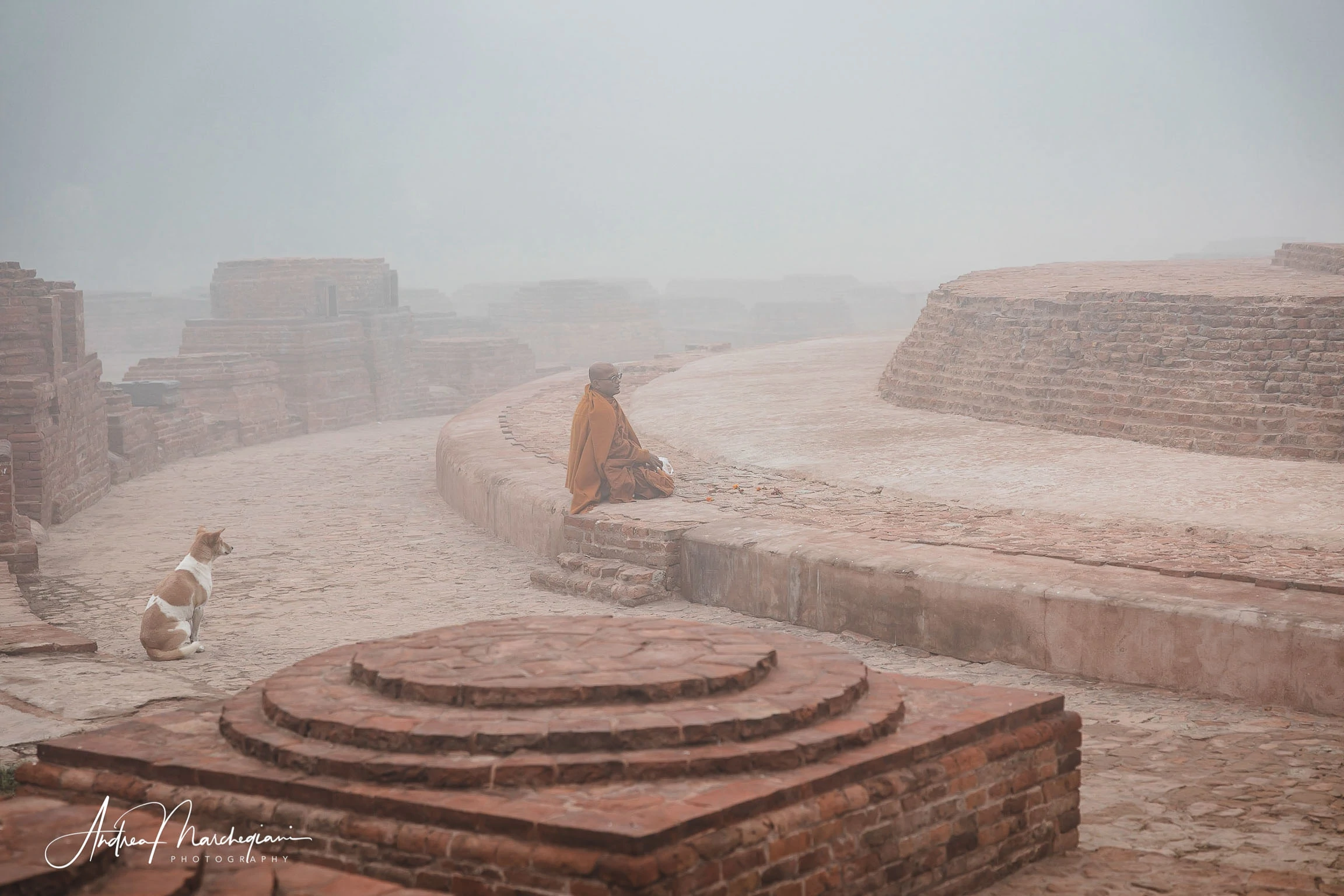
- Home
- Photo Galleries
- Portrait Photography
- Landscape Photography
- Street Photography
- China
- Ethiopia
- India
- Holy Ganges
- Varanasi
- Varanasi Ganga Aarti
- Varanasi, Manikarnika Ghat
- Varanasi Streets & Alleys
- Varanasi Demolition
- Varanasi Fruit Market
- Sarnath
- Brick Kilns
- Tamil Nadu, Chennai & Mamallapuram
- Tamil Nadu, Fort Tirumayam & Madurai
- Tamil Nadu, Tiruvannamalai & Thanjavur
- Kerala, Munnar
- Kerala, Peryiar
- Kerala, Backwaters
- Kerala, Kochi
- Kazakhstan
- Myanmar
- Senegal
- Uzbekistan
- Travel Blog
- China
- Ethiopia
- India
- Tamil Nadu & Kerala
- Varanasi
- Whato to do in Varanasi
- Varanasi Life along the Ghats
- Varanasi Death along the Ghats
- Varanasi Ganga Aarti Ceremony
- Varanasi demolished to honor Shiva
- Varanasi Fruit Market
- “Varanasi, A Journey into the Infinite”
- Sarnath
- All about River Ganges
- Holy Shit. All about Indian Cow Dung
- Clean India Project
- Brick factories
- Tilaka, pundra, bindi: what is the mark on Indian foreheads?
- Kazakhstan
- Mongolia
- Ulaanbaatar, the coldest capital in the world
- What to do in Ulaanbaatar
- Chinggis Khan Museum, 6 floors of Mongolian history
- Gorkhi-Terelj National Park and Bodgkhan Natural Reserve
- Altai Mountains, Things to do in Olgii and Sagsai
- Living with the Eagle Hunters
- Sagsai Eagle Festival
- Navrus Festival
- Xöömej, Mongolian throat singing
- Mongolian Food
- Myanmar
- Senegal
- Uzbekistan
- Latest Posts
- Photography Blog
- About
- Prints
Around the pyres we see many Indians crouched, with their usual rags. No one cries, no one is sad, no one works to stoke the fire: everyone seems to wait for the burning to end, without impatience.
… Thus, comforted by the warmth, we look more closely at those poor dead who burn without bothering anyone. Never, anywhere, at any time, in any act, of our entire Indian stay, have we felt such a deep sense of communion, of tranquility and, almost, of joy.
– Pierpaolo Pasolini, The scent of India
Share with your friends:
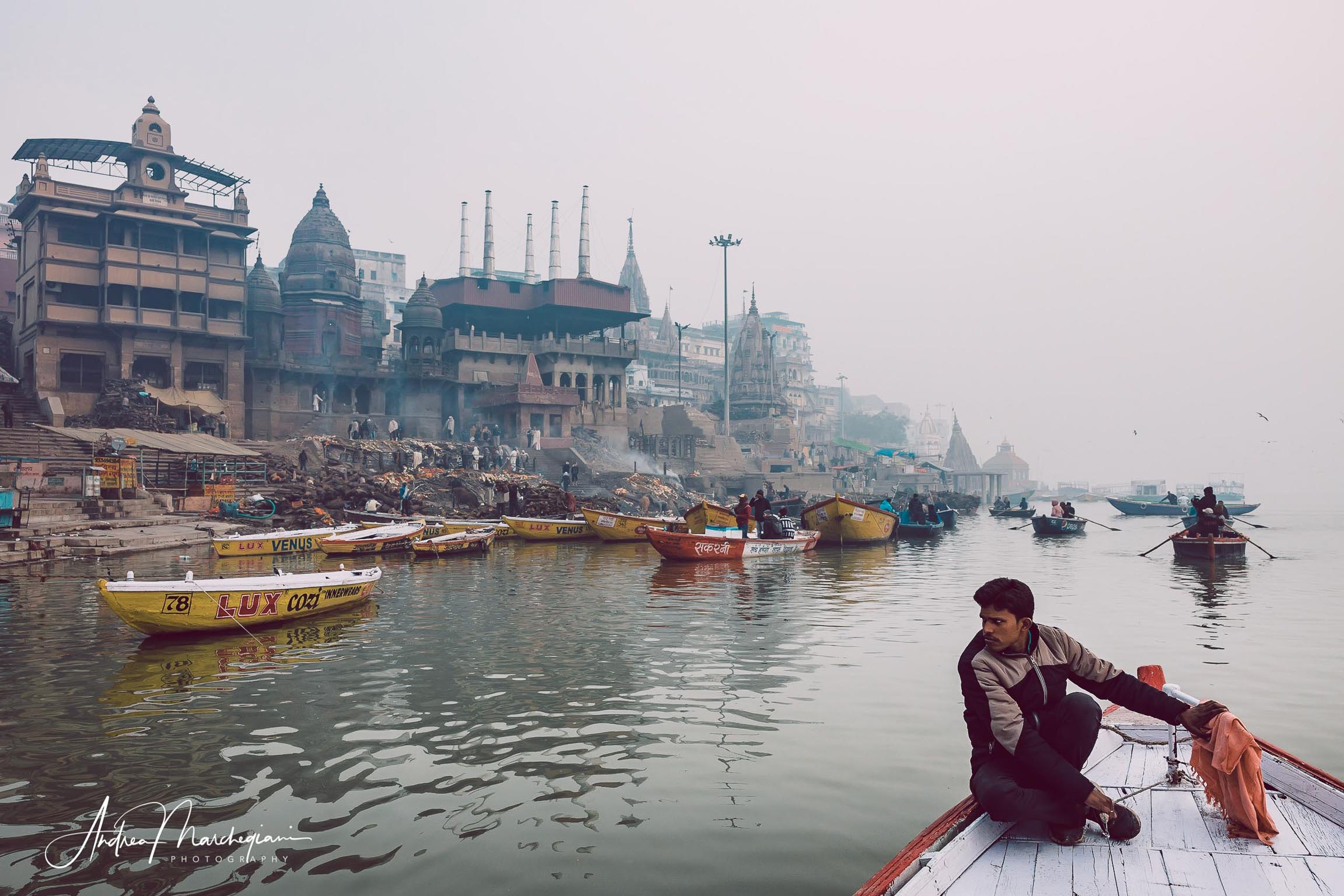
Hinduism as a union between opposites
Hinduism is one of the oldest and most complicated religions in the world, based on a body of common beliefs but without a single faith text. Hindu myths and legends have multiplied and branched over the centuries into an intricate maze.
Brahman, the god who created everything, is manifested as much in a male trinity, the Trimurti, as in a corresponding feminine trinity, the Trivedi. What makes things more complicated is the fact that each of the god in these triads manifest themselves to men with hundreds of different avatars.
Shiva, for example, is worshipped with 108 different names and is regarded as both the god who protects men and the god who destroys the world.
In Hinduism, creation-destruction duality is overcome in a worldview that embraces both aspects as essential moments of the reality of things. No creation is possible without the destruction of the previous reality.
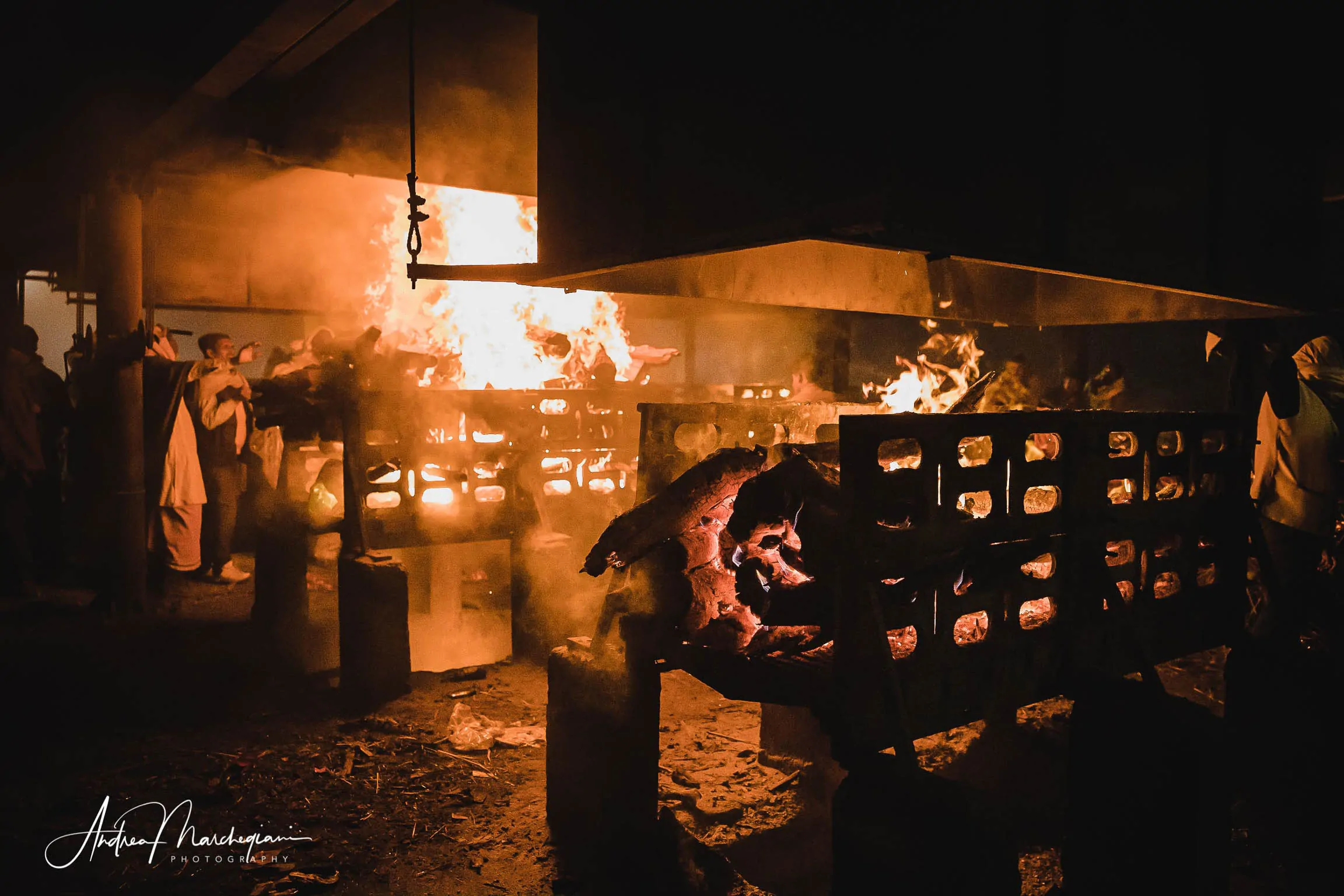
Varanasi and the burning ghats
Varanasi shows this merging of contradictions especially in Manikarnika Ghat, the largest of the two crematory ghats in the city. Here you find a fire that has been burning for many centuries. Every day, dozens of pyres are lit from embers left by the previous cremation. The original fire has been lit a millennium ago and it is still alive, thanks to the deceased who have fed it over the centuries.
There are other places in India where the dead are cremated along the banks of the Ganges; but only Manikarnika Ghat is in the city centre. The other crematoria, for hygienic reasons, are located in the outskirts, but the elbow of the river where Manikarnika rises has something special.
According to Hindu legends, here Shiva’s wife Parnati lost an earring. She charged Visnu with retrieving it, so he dug the bend of the river and filled it with his sweat. According to another legend, instead, in this place Visnu meditated for over 50,000 years, during which he created the whole universe.
Moreover, Hindus believe that those who are cremated in Varanasi can escape samsara, which is the cycle of reincarnations. This makes Manikarnika a doubly special place.
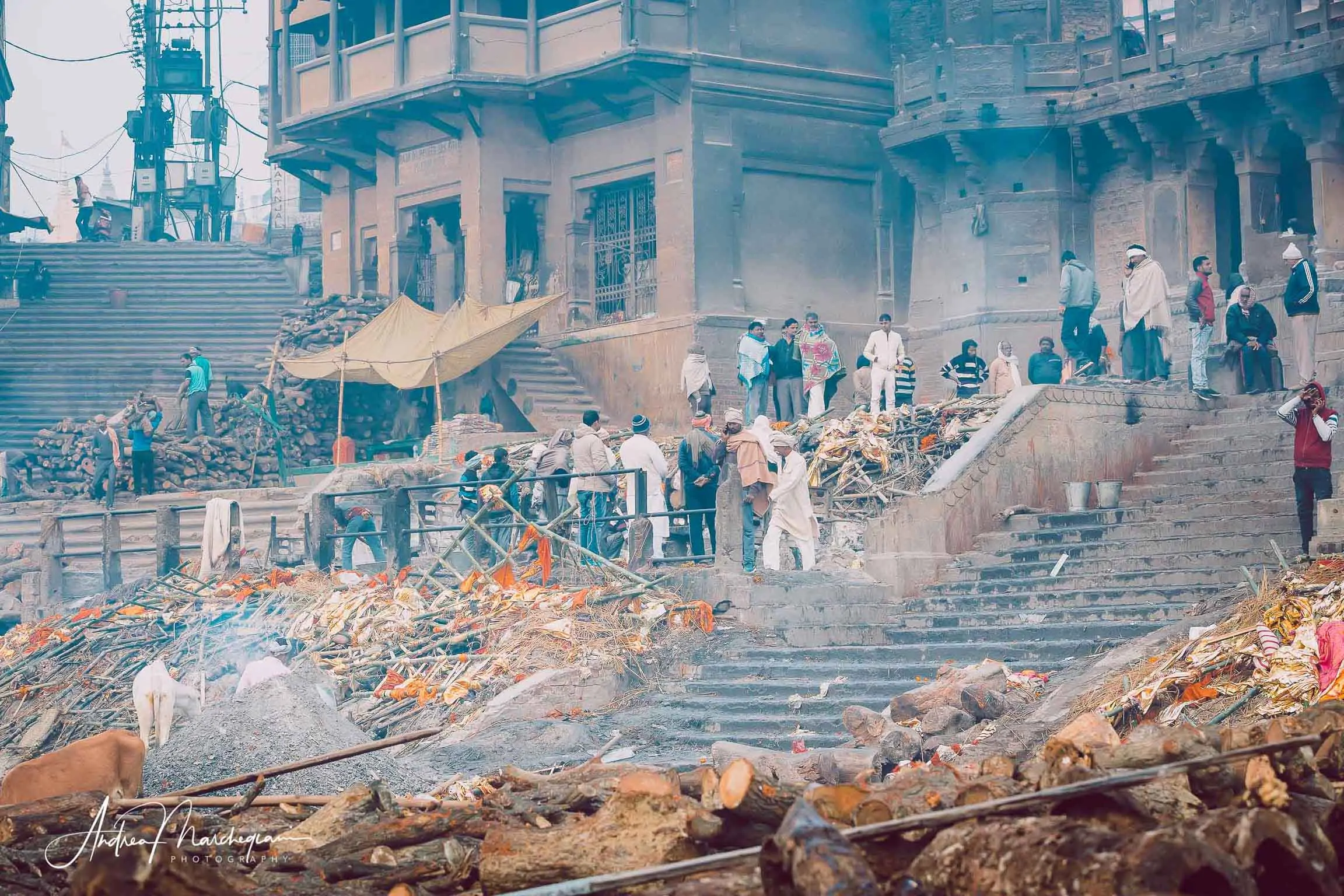
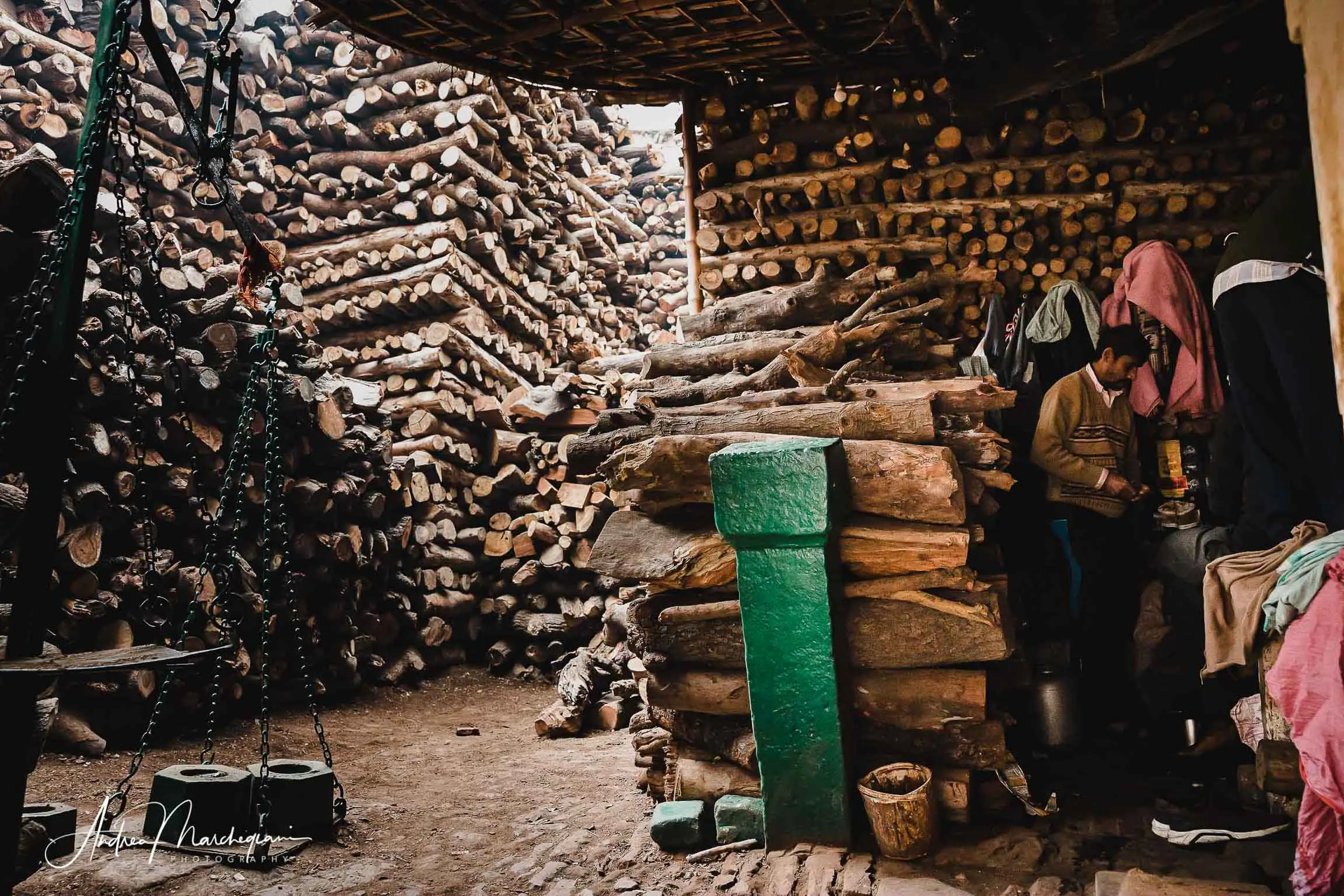
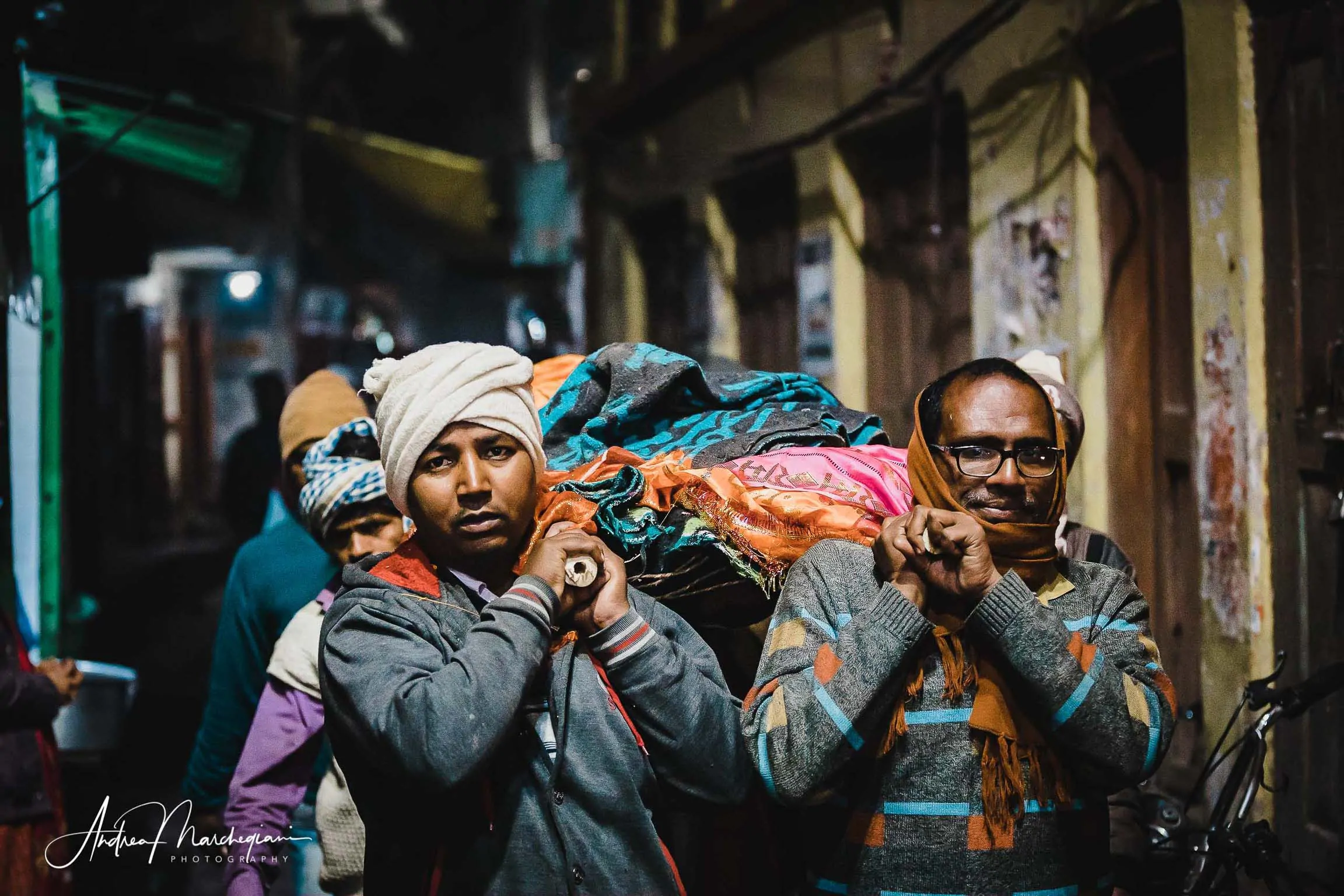
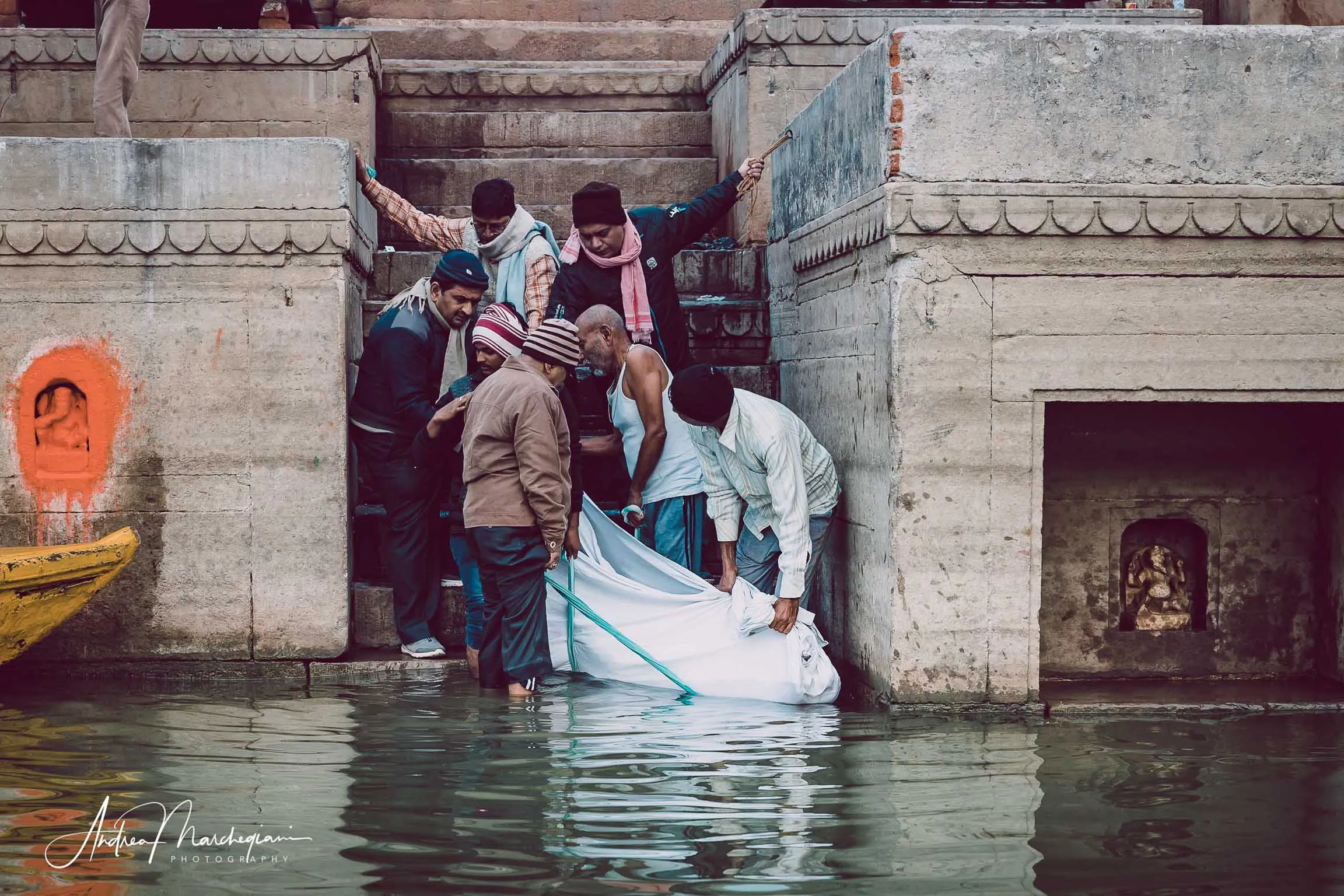
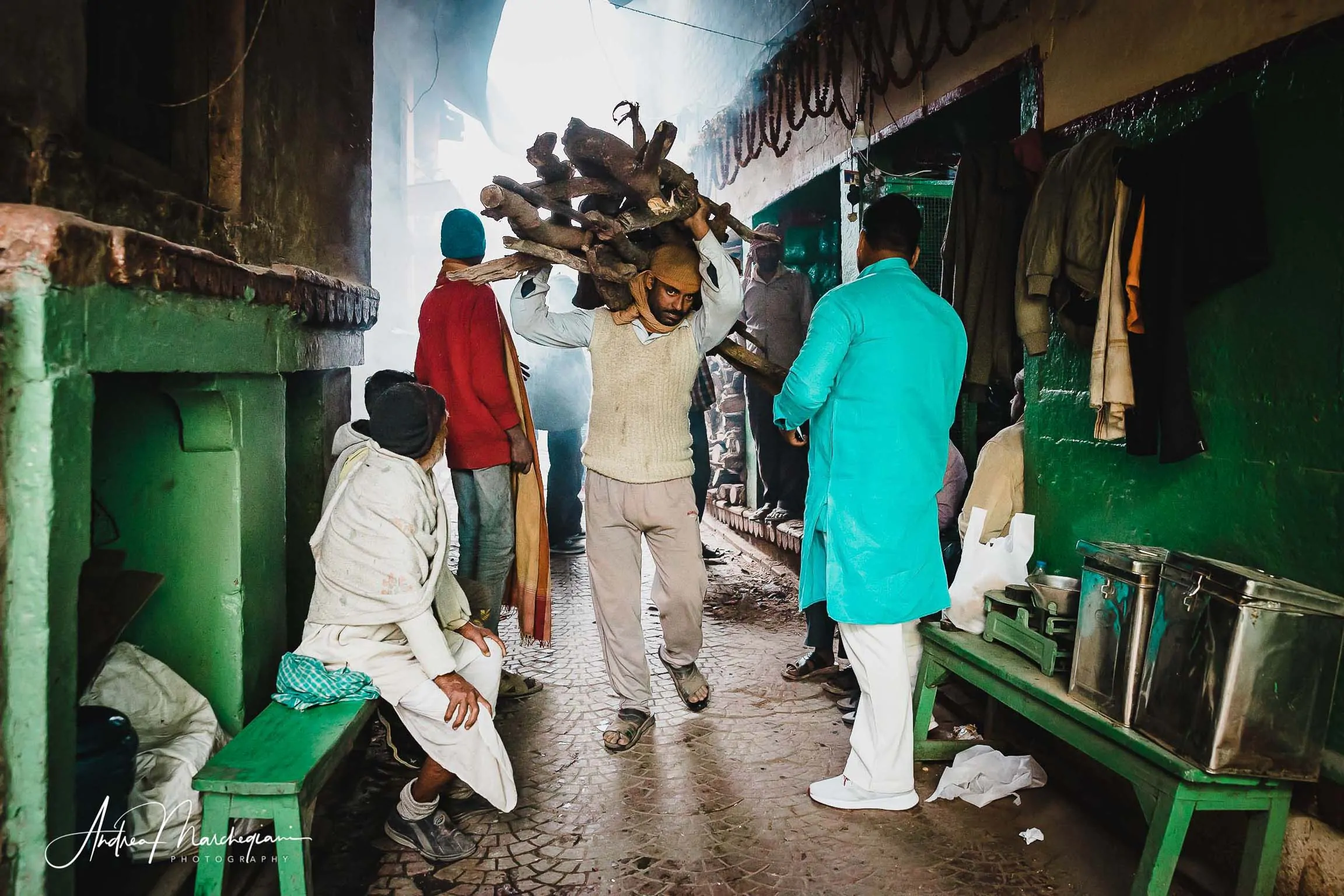
How cremations work?
In the city, there is only one street wide enough for funeral processions. Once the bodies of the dead reach the river, they are immersed in water to be purified; then, they are placed under about 3 quintals of wood and set on fire.
There are several spots assigned to place corpses and their proximity to the Ganges is determined by the caste of belonging. Only newborns or Babas, who are already pure, are not cremated but laid down along the banks of the river and let go. Their bodies are allowed to float wherever the current takes them and feed the fish of the Ganges.
On the streets next to the ghat, shops sell wood for funerary rites and barbers shave the heads of the deceased’s first-born. They just leave a little tail on the back of their neck. This is a ritual that symbolizes the grief they are going through. Women are not allowed. In the past, widows threw themselves into the flames, so they have been kept at a distance ever since.
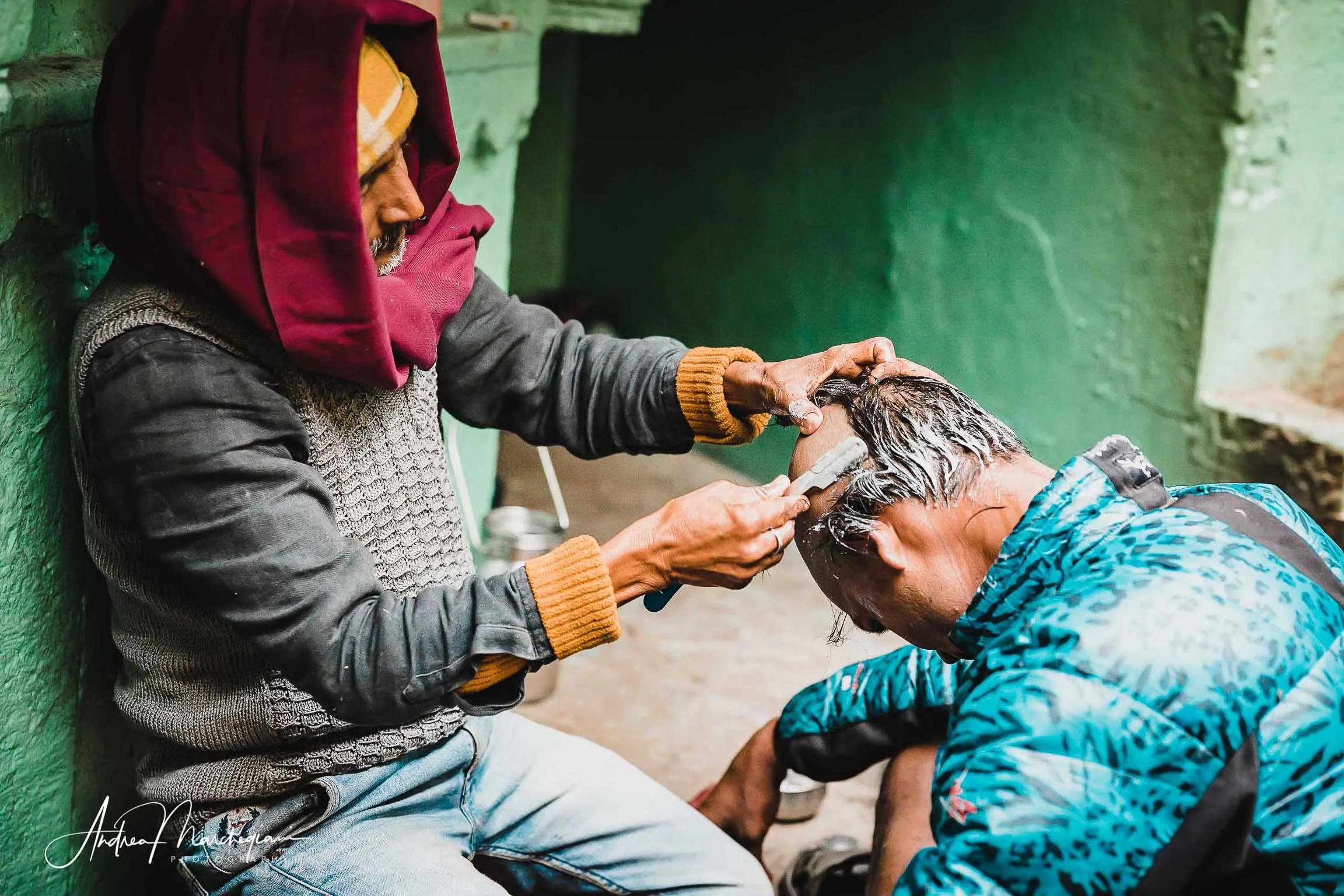
Burning ghats and scams to tourists
The first time I approach Manikarnika Ghat, I am aboard a boat that runs along the shores of the river. Between the fog and the smoke of the pyres, it is difficult to understand what is happening on the ghat. I’ll walk there later.
It’s not easy to watch cremations if you’re a tourist. As soon as I approach, I am harassed by locals who tell me to put away my camera immediately, and then offer to accompany me personally to the pyres.
I’ve already been warned against that kind of behaviour, and I know it’s a trap. The unfortunate visitors who agree to be guided will be faced with a request for money at the end of the tour. “Wood for a pyre is expensive. Please, leave a contribution. You will help the poorest people, who can not afford the funeral of their loved ones”. It is a lie, of course. The money will only fill the pockets of the crook they’ve bumped into .
Death is not a taboo
Some friends, who visited Varanasi before me, told me that they were shocked at the sight of the corpses; I myself do not know how I will react. Yet once I arrive at the ghat, I feel nothing but acceptance. Here, the veil of hypocrisy that our culture has thrown on death is finally torn.
In Europe, health and disease, life and death occupy different spaces, as if they were irreconcilable. In Varanasi, however, the streets leading to luxury hotels are covered with manure as much as the dark alleys where Dalits sleep huddled; the windows of the best restaurants border the Nepali Temple, a stone’s throw from the ghat crematorium. Life and death occupy the same spaces, revealing the basic truth of existence.
What is born is destined to die; what we hold dear today and make us feel safe, tomorrow will be someone else’s. There is an Indian saying: “Life is like a bridge: cross it, but do not think about building your house on it”.
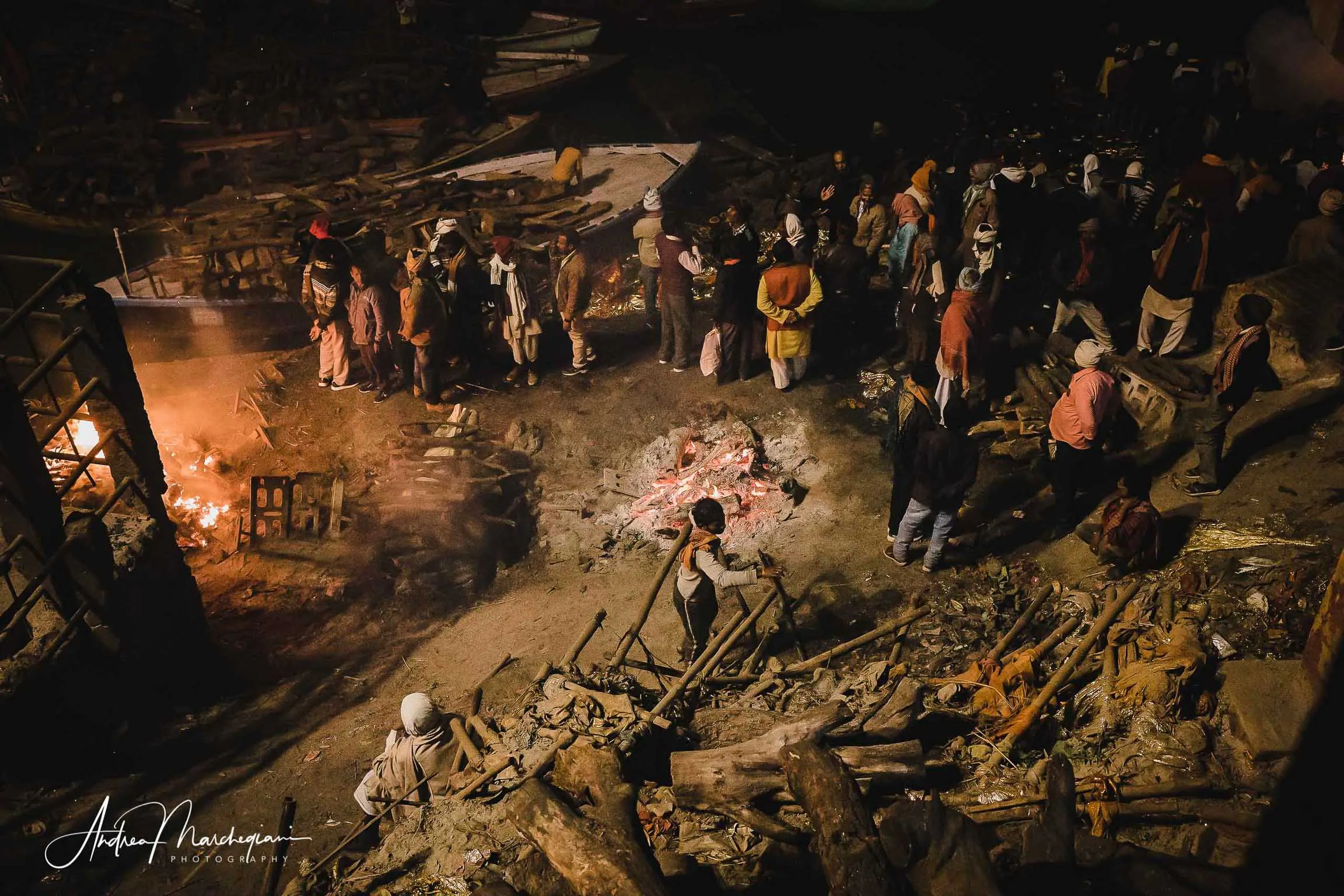
Looking death in the face keeps illusions away
During my stay in Varanasi, I visited Manikarnika Ghat several times. I even contacted the man who runs the sacred oven and got permission to take some pictures.
I want to believe that those who work at the cremations accepted me, because on the last day they let me attend closely, without caring about me. I observed the activity of the ghat for a period of time that I couldn’t quantify. Time seemed to stand still.
I watched the pyres burn, while the cows warmed by the fire and the dogs curled up on the ashes of the fires of the day before, now extinguished but still lukewarm. I watched young people brushing their teeth next to the bodies waiting to be cremated.
Not far away, a few moments before, I saw a guy urinating in the river in between funerals. All these private moments were shared with the Ganges, who is regarded as a mother goddess by the Hindus. I breathed the smoke that thickened the air, soaked the hair and clothes. For a brief moment, I thought that maybe it’s not Varanasi being absurd and surreal, but the rest of the world.



